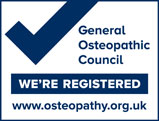Keep the aces coming!
After 2 weeks of flushing meadows watching some line busting serves from the tennis glitterati, Alan Nevies and his colleagues at northlondonosteopaths were contemplating the miraculous perfection of the …..shoulder! That is one of the things that happen when osteopaths watch tennis.
The shoulder has been described as “ …. a master piece of technical design, with much the widest range of movement of any joint, all held firmly in place by a complex interplay of muscles and tendons.” The two principal conditions which limit that range, frozen shoulder and rotator cuff impingement syndrome, can affect the physical and psychological wellbeing of the patient. Sadly there does not seem to be clarity on the best way to deal with these conditions.
A frozen shoulder often starts suddenly with the onset of intense pain. The pain recedes gradually but the shoulder is then immobile, “frozen” and may be so for about a year or more before “thawing.” The main treatment approaches for this are anti-inflammatory drugs and the advice that the shoulder will loosen up in time. Recently a more interventionist and radical approach is becoming more popular, having previously been more widely used 30 years ago. It involves manipulating the shoulder under general anaesthetic, in conjunction with a steroid/local anaesthetic injection into the joint.
Rotator cuff syndrome is supposed to be amenable to keyhole surgery, subacromial decompression, which is supposed to reduce the compression and release the impingement. A recent review is calling this procedure into question as it may not provide any benefit or improvement in levels of pain, function or quality of life. Not a good place to be for patients and professionals trying for the best outcome for relief.
An osteopath would take a more holistic approach when dealing with such conditions and look to improve other structures that influence the health and mobility of the shoulder joint. An example might be to look at the thoracic spinal joints (especially the joints T2-T7 that are in line with the shoulder blade). A healthy shoulder is very much rooted in a healthy shoulder blade positioning. If thoracic spinal joints are restricted this could cause tension in the muscles attaching onto the shoulder blade and therefore alter the mechanics of the shoulder blade. This would result in a shoulder that is not working at its optimum and an effect of this might be a dysfunctional and painful shoulder.
So en-route to Wimbledon or Flushing Meadows (not too early to start limbering up for next year) swing by northlondonosteopaths where Alan Nevies and his colleagues will try to ensure you serve up a string of aces courtesy of a shoulder in full swing, and an optimally functioning musculo skeletal system.


